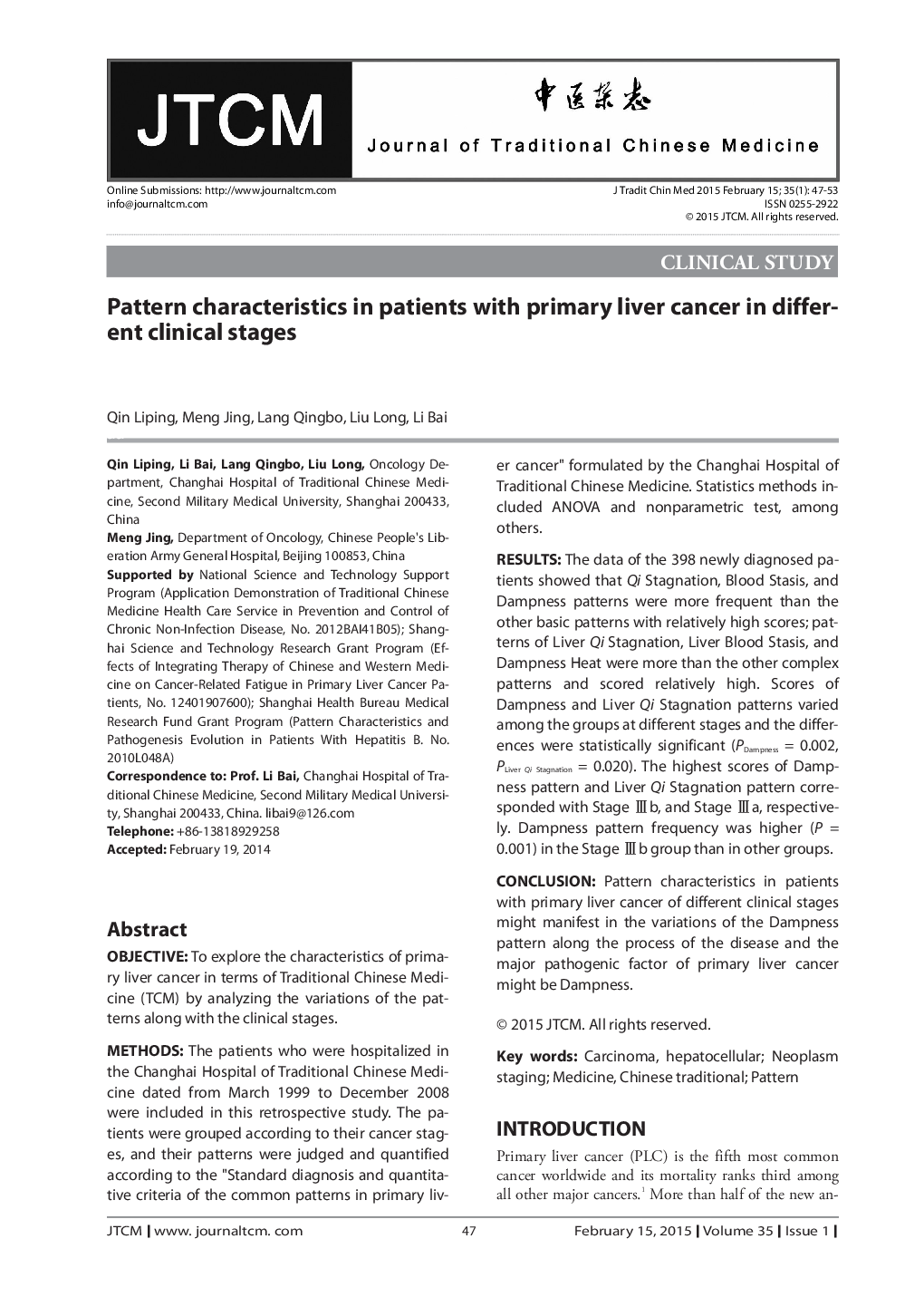| Article ID | Journal | Published Year | Pages | File Type |
|---|---|---|---|---|
| 4201368 | Journal of Traditional Chinese Medicine | 2015 | 7 Pages |
ObjectiveTo explore the characteristics of primary liver cancer in terms of Traditional Chinese Medicine (TCM) by analyzing the variations of the patterns along with the clinical stages.MethodsThe patients who were hospitalized in the Changhai Hospital of Traditional Chinese Medicine dated from March 1999 to December 2008 were included in this retrospective study. The patients were grouped according to their cancer stages, and their patterns were judged and quantified according to the “Standard diagnosis and quantitative criteria of the common patterns in primary liver cancer” formulated by the Changhai Hospital of Traditional Chinese Medicine. Statistics methods included ANOVA and nonparametric test, among others.ResultsThe data of the 398 newly diagnosed patients showed that Qi Stagnation, Blood Stasis, and Dampness patterns were more frequent than the other basic patterns with relatively high scores; patterns of Liver Qi Stagnation, Liver Blood Stasis, and Dampness Heat were more than the other complex patterns and scored relatively high. Scores of Dampness and Liver Qi Stagnation patterns varied among the groups at different stages and the differences were statistically significant (PDampness = 0.002, PLiverQi Stagnation = 0.020). The highest scores of Dampness pattern and Liver Qi Stagnation pattern corresponded with Stage IIIb, and Stage IIIa, respectively. Dampness pattern frequency was higher (P = 0.001) in the Stage IIIb group than in other groups.ConclusionPattern characteristics in patients with primary liver cancer of different clinical stages might manifest in the variations of the Dampness pattern along the process of the disease and the major pathogenic factor of primary liver cancer might be Dampness.
